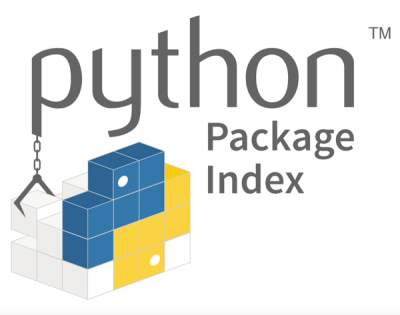.. image:: https://github.com/django-parler/django-parler/actions/workflows/tests.yaml/badge.svg
:target: https://github.com/django-parler/django-parler/actions/workflows/tests.yaml
.. image:: https://readthedocs.org/projects/django-parler/badge/?version=stable
:target: https://django-parler.readthedocs.io/en/stable/
.. image:: https://img.shields.io/pypi/v/django-parler.svg
:target: https://pypi.python.org/pypi/django-parler/
.. image:: https://img.shields.io/pypi/l/django-parler.svg
:target: https://pypi.python.org/pypi/django-parler/
.. image:: https://img.shields.io/codecov/c/github/django-parler/django-parler/master.svg
:target: https://codecov.io/github/django-parler/django-parler?branch=master
django-parler
Simple Django model translations without nasty hacks.
Features:
-
Nice admin integration.
-
Access translated attributes like regular attributes.
-
Automatic fallback to the default language.
-
Separate table for translated fields, compatible with django-hvad_.
-
Plays nice with others, compatible with django-polymorphic_, django-mptt_ and such:
- No ORM query hacks.
- Easy to combine with custom Manager or QuerySet classes.
- Easy to construct the translations model manually when needed.
See the documentation_ for more details.
A brief overview
Installing django-parler
The package can be installed using:
.. code-block:: bash
pip install django-parler
Add the following settings:
.. code-block:: python
INSTALLED_APPS += (
'parler',
)
Optionally, the admin tabs can be configured too:
.. code-block:: python
PARLER_LANGUAGES = {
None: (
{'code': 'en',},
{'code': 'en-us',},
{'code': 'it',},
{'code': 'nl',},
),
'default': {
'fallback': 'en', # defaults to PARLER_DEFAULT_LANGUAGE_CODE
'hide_untranslated': False, # the default; let .active_translations() return fallbacks too.
}
}
Replace None with the SITE_ID when you run a multi-site project with the sites framework.
Each SITE_ID can be added as additional entry in the dictionary.
Make sure your project is configured for multiple languages.
It might be useful to limit the LANGUAGES setting. For example:
.. code-block:: python
from django.utils.translation import gettext_lazy as _
LANGUAGE_CODE = 'en'
LANGUAGES = (
('en', _("English")),
('en-us', _("US English")),
('it', _('Italian')),
('nl', _('Dutch')),
('fr', _('French')),
('es', _('Spanish')),
)
By default, the fallback language is the same as LANGUAGE_CODE.
The fallback language can be changed in the settings:
.. code-block:: python
PARLER_DEFAULT_LANGUAGE_CODE = 'en'
Creating models
Using the TranslatedFields wrapper, model fields can be marked as translatable:
.. code-block:: python
from django.db import models
from parler.models import TranslatableModel, TranslatedFields
class MyModel(TranslatableModel):
translations = TranslatedFields(
title = models.CharField(_("Title"), max_length=200)
)
def __unicode__(self):
return self.title
Accessing fields
Translatable fields can be used like regular fields:
.. code-block:: python
>>> object = MyModel.objects.all()[0]
>>> object.get_current_language()
'en'
>>> object.title
u'cheese omelet'
>>> object.set_current_language('fr') # Only switches
>>> object.title = "omelette du fromage" # Translation is created on demand.
>>> object.save()
Internally, django-parler stores the translated fields in a separate model, with one row per language.
Filtering translations
To query translated fields, use the .translated() method:
.. code-block:: python
MyObject.objects.translated(title='cheese omelet')
To access objects in both the current and possibly the fallback language, use:
.. code-block:: python
MyObject.objects.active_translations(title='cheese omelet')
This returns objects in the languages which are considered "active", which are:
- The current language
- The fallback language when
hide_untranslated=False in the PARLER_LANGUAGES setting.
Changing the language
The queryset can be instructed to return objects in a specific language:
.. code-block:: python
>>> objects = MyModel.objects.language('fr').all()
>>> objects[0].title
u'omelette du fromage'
This only sets the language of the object.
By default, the current Django language is used.
Use object.get_current_language() and object.set_current_language()
to change the language on individual objects.
There is a context manager to do this temporary:
.. code-block:: python
from parler.utils.context import switch_language
with switch_language(model, 'fr'):
print model.title
And a function to query just a specific field:
.. code-block:: python
model.safe_translation_getter('title', language_code='fr')
Advanced Features
This package also includes:
- Creating the
TranslatedFieldsModel manually! - Form classes for inline support.
- View classes for switching languages, creating/updating translatable objects.
- Template tags for language switching-buttons.
- ORM methods to handle the translated fields.
- Admin inlines support.
See the documentation_ for more details.
Special notes
- Using
ModelAdmin.prepopulated_fields doesn't work, but you can use get_prepopulated_fields() as workaround. - Due to
ORM restrictions <https://docs.djangoproject.com/en/dev/topics/db/queries/#spanning-multi-valued-relationships>_
queries for translated fields should be performed in a single .translated(..) or .active_translations(..) call. - The
.active_translations(..) method typically needs to .distinct() call to avoid duplicate results of the same object.
TODO
- The list code currently performs one query per object. This needs to be reduced.
- Preferably, the
TranslatedField proxy on the model should behave like a RelatedField,
if that would nicely with the ORM too.
Please contribute your improvements or work on these area's!
Contributing
This module is designed to be generic. In case there is anything you didn't like about it,
or think it's not flexible enough, please let us know. We'd love to improve it!
If you have any other valuable contribution, suggestion or idea,
please let us know as well because we will look into it.
Pull requests are welcome too. :-)
.. _django-hvad: https://github.com/kristianoellegaard/django-hvad
.. _django-mptt: https://github.com/django-mptt/django-mptt
.. _django-fluent-pages: https://github.com/edoburu/django-fluent-pages
.. _django-polymorphic: https://github.com/django-polymorphic/django-polymorphic
.. _documentation: https://django-parler.readthedocs.io/



